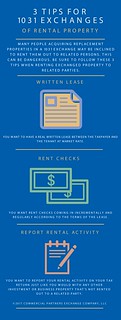Investing in real estate can be a lucrative venture, but it’s not without its challenges. One such challenge is navigating the complex world of taxes. However, there is a strategy that savvy investors use to their advantage – the 1031 exchange.
This tax-deferred exchange allows investors to swap one property for another, while deferring capital gains taxes.
But what if you have two properties and want to exchange them for just one? In this article, we will explore the possibilities and considerations of exchanging two properties for one through a 1031 exchange.
The Basics of a 1031 Exchange
A 1031 exchange, also known as a like-kind exchange, allows real estate investors to defer capital gains taxes when selling and acquiring properties. By reinvesting the sale proceeds into a new property, investors can delay tax payments until they sell the replacement property.
This strategy offers two main benefits: deferring taxes allows for increased cash flow and reinvestment opportunities, while exchanging properties helps avoid costly transaction fees. However, it’s important to follow IRS guidelines regarding property value and timeframes for identification and completion of the exchange.
Overall, understanding the basics of a 1031 exchange is crucial for maximizing financial gains in real estate investing.
Exploring the Option to Exchange Two Properties for One
When considering real estate investments, most investors are familiar with the concept of exchanging one property for another through a 1031 exchange. However, what many may not realize is that it is indeed possible to swap multiple properties for one replacement property.
This option offers investors flexibility and opens up opportunities for diversification or consolidation within their portfolio.
Before deciding to exchange two properties for one, it’s crucial to carefully evaluate the potential advantages and disadvantages involved. Consolidating properties can streamline management responsibilities and increase cash flow by reducing expenses.
On the other hand, it’s important to consider the potential loss of diversification and any associated risks that come with consolidating assets into a single property.
Moreover, financial implications and tax consequences should be thoroughly assessed when contemplating such an exchange. Investors should take into account factors such as cost basis, depreciation recapture, and any capital gains taxes that may apply in this scenario.
To gain a clear understanding of the specific tax consequences related to their unique situation, consulting with a tax professional or qualified intermediary is highly advisable.
By exploring the option to exchange two properties for one, investors have the chance to optimize their investment portfolio strategically.
Whether seeking to consolidate assets for more efficient management or diversify holdings within a single property type, understanding the advantages, disadvantages, and financial implications is crucial in making informed decisions.
In summary, while most investors are familiar with exchanging one property for another through a 1031 exchange, exploring the option of swapping multiple properties for one replacement property offers additional flexibility and opportunities for portfolio enhancement.
However, careful evaluation of potential advantages and disadvantages as well as assessing financial implications and tax consequences is essential in making informed decisions regarding this type of exchange strategy.
Identifying Suitable Properties for Exchange
To successfully participate in a 1031 exchange, you need to find the right replacement property that meets your investment goals and criteria. Start by clearly defining your objectives, such as maximizing cash flow or diversifying your portfolio.
Next, research potential properties that align with these goals by considering factors like location, market conditions, rental demand, and potential appreciation. By conducting thorough research and selecting properties that specifically meet your objectives, you can make the most of your exchange opportunity.
Proper Planning and Timing for a Successful Exchange
To ensure a successful exchange process, proper planning and timing are crucial. Carefully plan each stage of the exchange process to minimize risks and maximize benefits.
This includes determining suitable timeframes for finding replacement properties, allowing ample time for due diligence and negotiations, and ensuring a smooth transition between properties.
Start by establishing a timeline that aligns with your investment goals. Begin searching for potential replacement properties early to avoid rushing into decisions. Allocate enough time for thorough due diligence, including inspections and reviewing financial statements. Also, consider market conditions when assessing the viability of a property.
Allow sufficient time for negotiations with the seller or their representative to reach mutually beneficial agreements.
Smooth transitions between properties are essential. Allocate time for coordinating logistics such as moving belongings, transferring utilities, and updating legal documentation.
By following a well-planned timeline and giving ample time to each stage of the exchange process, you increase your chances of executing a successful transaction while minimizing risks.
Consider using the table below as a reference:
| Stage | Action |
|---|---|
| Timeline | Establish suitable timeframe |
| Finding | Thoroughly research potential replacements |
| Due Diligence | Inspections, financial statement review |
| Negotiations | Allocate time for negotiations with seller |
| Transition | Coordinate logistics for smooth transfer |
By carefully managing these stages, you will set yourself up for a smooth and successful exchange process.
Navigating Complexities: Legal, Financial, and Tax Considerations
Successfully participating in a 1031 exchange requires navigating the complexities of legal, financial, and tax considerations. To comply with IRS regulations, the properties involved must be like-kind, meaning they are similar in nature or character.
Seeking professional guidance from lawyers, accountants, or qualified intermediaries is highly recommended to ensure compliance and optimize financial outcomes. These experts can assist with understanding legal requirements, preparing necessary documents, and staying updated on any regulatory changes.
By carefully navigating these complexities, investors can maximize the benefits of a 1031 exchange while minimizing risks.
The Importance of Professional Guidance in a Successful Exchange Process
Seeking professional guidance is essential for a successful 1031 exchange. Professionals help minimize risks related to legal and tax issues, ensuring compliance with IRS regulations. They also offer valuable insights into market conditions and property values, maximizing financial benefits.
Their expertise allows for thorough planning and informed decision-making throughout the exchange process, setting you up for success.
| Benefits of Professional Guidance |
|---|
| Minimizing risks associated with legal or tax-related issues |
| Maximizing opportunities for optimal financial outcomes |
| Thorough planning and comprehensive strategy |
| Expertise in navigating complex regulations |
| Valuable insights into market conditions, property values, and potential tax advantages |
Real-Life Examples: Success Stories from Investors Who Opted for Exchanging Two Properties for One
Real-life examples provide valuable insights into the potential benefits and positive outcomes of opting for a 1031 exchange to consolidate two properties into one. These success stories not only showcase the possibilities but also offer inspiration and guidance to other investors considering similar transactions.
One aspect that these real-life experiences highlight is the motivations behind the decisions made by investors to pursue property consolidation. By sharing their reasons, such as simplifying management responsibilities or seizing market opportunities, investors can inspire others to explore this option.
These motivations serve as a catalyst for potential investors who may be seeking ways to streamline their portfolio or capitalize on favorable market conditions.
Furthermore, these success stories emphasize the importance of strategic planning and execution in achieving positive results. Through meticulous research, careful consideration of market trends, and professional guidance, these investors were able to navigate the complexities of a 1031 exchange successfully.
The examples demonstrate how thorough preparation and expert advice contributed significantly to their favorable outcomes.
The experiences shared by these real estate investors serve as a testament to the effectiveness of exchanging two properties for one through a 1031 exchange. They provide valuable insights into the potential advantages of this strategy and encourage others to explore this avenue with confidence.
Whether it’s consolidating properties for easier management or capitalizing on market opportunities, these success stories offer inspiration and guidance for investors looking to achieve similar outcomes.
Overall, these real-life examples illustrate the possibilities that arise when investors choose to consolidate two properties into one through a 1031 exchange.
By showcasing both the motivations behind such decisions and highlighting the successful results achieved through strategic planning and execution, they inspire others to consider this option while offering invaluable lessons along the way.
Conclusion
Consolidating real estate investments through a 1031 exchange can offer significant benefits, and exploring the possibility of exchanging two properties for one replacement property is an option worth considering. However, it is crucial to approach this process with careful planning and seek expert advice to navigate its complexities successfully.
By engaging in a multiple-property exchange, investors have the opportunity to optimize their portfolios and potentially increase their returns. This strategy allows them to consolidate their assets into a single, more valuable property that better aligns with their investment goals.
While the concept of a 1031 exchange typically involves swapping one property for another, combining two properties into one replacement property requires thoughtful consideration. Investors must weigh the advantages and disadvantages, evaluate the financial implications, and fully understand the tax consequences involved.
Proper planning procedures are essential in facilitating a smooth multiple-property exchange. Working closely with professionals who specialize in 1031 exchanges will ensure that all legal requirements are met and that potential risks are mitigated.
These experts can provide guidance on identifying suitable replacement properties, assessing market value, negotiating terms, and complying with IRS regulations.
Real-life examples can be incredibly insightful when contemplating a multiple-property exchange. By studying success stories from experienced investors who have effectively executed similar transactions, individuals can gain valuable knowledge and insights into best practices.
These case studies highlight the potential benefits as well as any challenges that may arise during the process.
[lyte id=’muGLBJINt5Y’]







